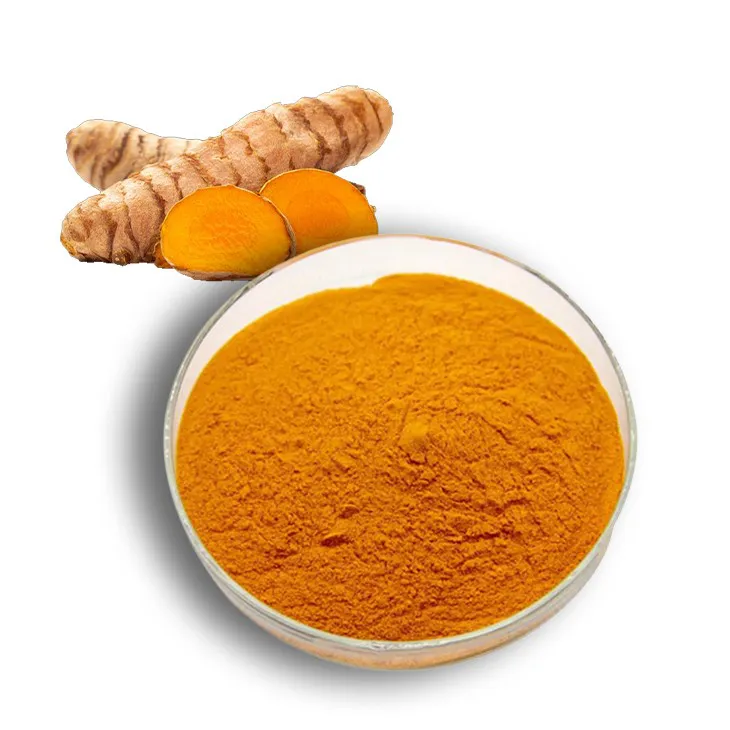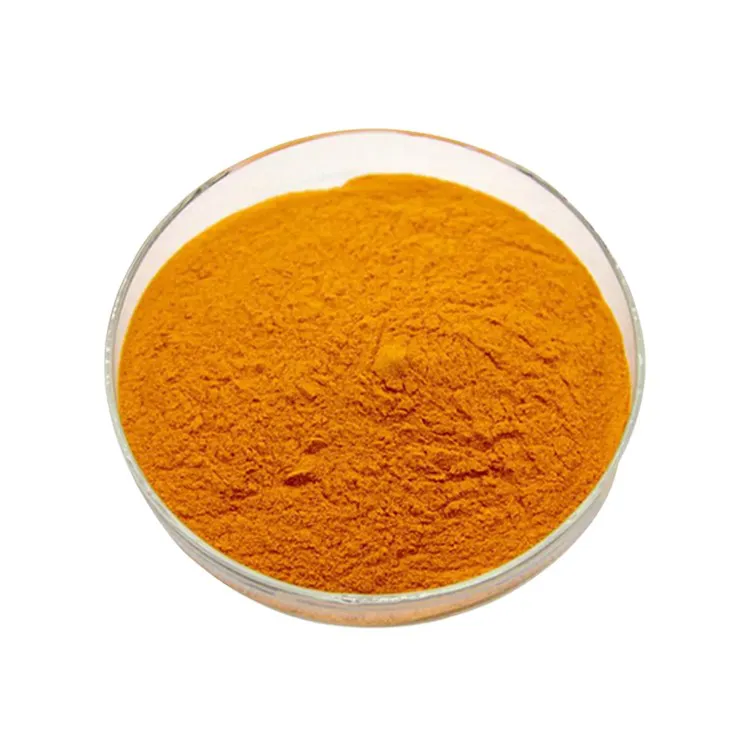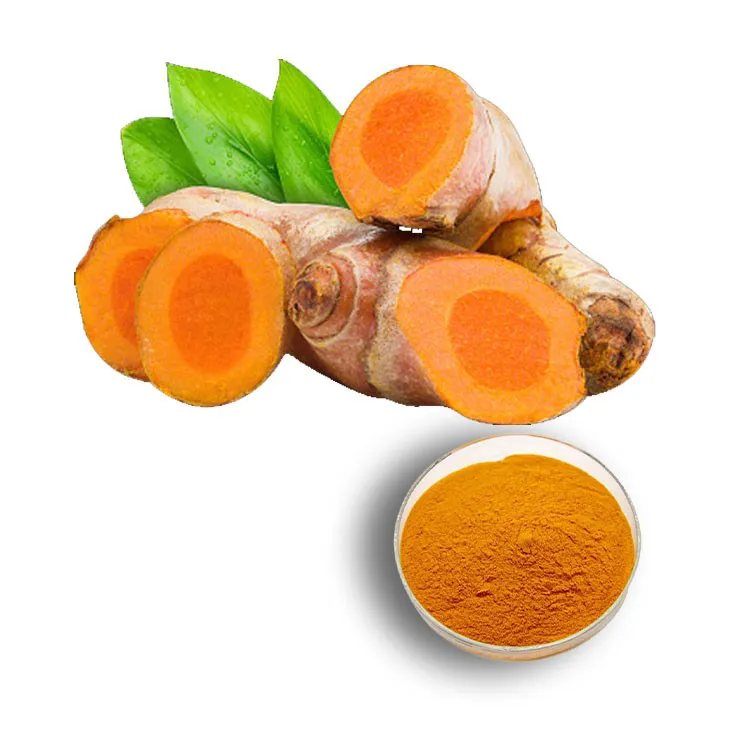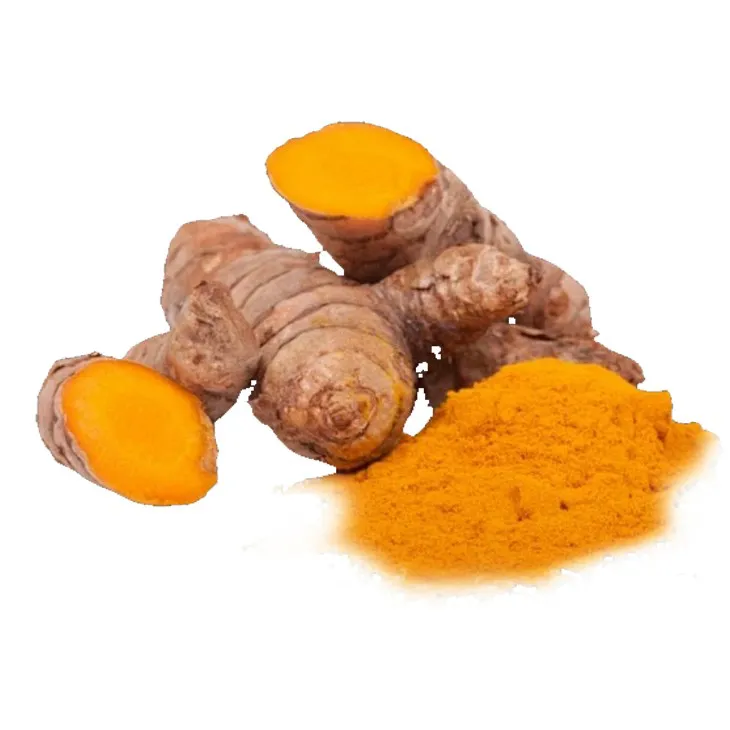- 0086-571-85302990
- sales@greenskybio.com
Curcumin: Uses, Advantages, and Manufacturing Processes
2024-11-13

1. Introduction to Curcumin
Curcumin is a natural compound that has been used for centuries in traditional medicine, particularly in Ayurvedic and Chinese medicine. It is the main bioactive component of turmeric, a spice commonly used in cooking. Curcumin has a bright yellow color and is responsible for the characteristic color of turmeric. Chemically, it belongs to the group of polyphenols, which are known for their antioxidant properties.

2. Uses of Curcumin
2.1. In the Food Industry
- As a food coloring agent: Due to its vibrant yellow color, curcumin is used as a natural food coloring in a variety of products. It is commonly used in the coloring of mustard, curry powders, and some dairy products. - For flavor enhancement: In addition to its color, curcumin also imparts a unique flavor to food. It has a warm, earthy, and slightly bitter taste that adds depth to many dishes, especially in Indian, Middle Eastern, and Southeast Asian cuisines.
2.2. In the Pharmaceutical and Nutraceutical Fields
- Anti - inflammatory properties: One of the most well - known uses of curcumin is its anti - inflammatory effect. It can help reduce inflammation in the body, which is associated with many chronic diseases such as arthritis, inflammatory bowel disease, and heart disease. - Antioxidant activity: Curcumin is a powerful antioxidant. It can neutralize free radicals in the body, protecting cells from oxidative damage. This antioxidant property may play a role in preventing cancer, neurodegenerative diseases, and aging - related disorders. - Cardiovascular health: Curcumin may contribute to heart health in several ways. It can help lower cholesterol levels, improve endothelial function (the lining of blood vessels), and reduce the risk of blood clot formation. - Treatment of metabolic syndrome: Studies have shown that curcumin may be beneficial in the management of metabolic syndrome, which includes symptoms such as obesity, high blood pressure, high blood sugar, and abnormal lipid levels. It can improve insulin sensitivity and help regulate blood sugar levels. - Neuroprotective effects: There is evidence to suggest that curcumin has neuroprotective properties. It may help prevent or slow down the progression of neurodegenerative diseases such as Alzheimer's and Parkinson's disease by reducing inflammation and oxidative stress in the brain.
2.3. In Cosmetics
- Skin health: Curcumin is used in some cosmetics for its potential benefits to the skin. It can help soothe irritated skin, reduce inflammation, and has antioxidant properties that can protect the skin from environmental damage. It may also be used in the treatment of skin conditions such as acne and psoriasis. - Hair care: In hair care products, curcumin can be used to promote healthy hair growth. It may help improve the condition of the scalp by reducing inflammation and providing antioxidant protection.

3. Advantages of Curcumin
3.1. Natural and Safe
Being a natural compound derived from turmeric, curcumin is generally considered safe for consumption. Compared to many synthetic drugs, it has a lower risk of side effects. However, it is important to note that in high doses, curcumin may cause some gastrointestinal discomfort, such as nausea and diarrhea.
3.2. Multiple Health Benefits
As mentioned earlier, curcumin offers a wide range of health benefits. Its anti - inflammatory, antioxidant, and other properties make it a promising compound for the prevention and treatment of various diseases. This versatility is a significant advantage, as it can target multiple aspects of health simultaneously.
3.3. Long - Standing Traditional Use
Curcumin has a long history of use in traditional medicine systems. This traditional knowledge provides a basis for its modern - day applications. The fact that it has been used for centuries without major adverse effects gives confidence in its safety and potential efficacy.

4. Manufacturing Processes of Curcumin
4.1. Extraction from Turmeric
- Traditional extraction methods: - Solvent extraction: In traditional solvent extraction, turmeric powder is typically soaked in an organic solvent such as ethanol or acetone. The solvent helps to dissolve the curcumin and other bioactive compounds from the turmeric matrix. After a period of soaking, the solution is filtered to separate the liquid containing the curcumin from the solid residue. The solvent is then evaporated, leaving behind a concentrated Curcumin Extract. - Steam distillation: Steam distillation can also be used to extract curcumin. In this process, steam is passed through the turmeric, which causes the volatile compounds, including curcumin, to vaporize. The vapor is then condensed back into a liquid, which contains the curcumin along with other components. This method is more suitable for extracting the essential oils along with curcumin. - Modern extraction techniques: - Supercritical fluid extraction (SFE): SFE is a relatively new and advanced extraction method. In this process, a supercritical fluid, usually carbon dioxide (CO₂), is used as the solvent. The supercritical CO₂ has properties between a gas and a liquid, which allows it to penetrate the turmeric matrix effectively and extract the curcumin. The advantage of SFE is that it is a cleaner process as it does not leave behind any solvent residues, and it can be more selective in extracting the desired compounds. - Microwave - assisted extraction: Microwave - assisted extraction uses microwave energy to heat the turmeric - solvent mixture. This rapid heating helps to break down the cell walls of the turmeric more quickly, allowing for a faster and more efficient extraction of curcumin. It can also reduce the extraction time and the amount of solvent required compared to traditional extraction methods.
4.2. Purification of Curcumin
- Column chromatography: After extraction, the Curcumin Extract may contain other impurities. Column chromatography is a common method used for purification. In this method, the extract is passed through a column filled with a stationary phase (such as silica gel). Different compounds in the extract will interact differently with the stationary phase, allowing for the separation of curcumin from other impurities. - Recrystallization: Recrystallization is another purification technique. The Curcumin Extract is dissolved in a suitable solvent at a high temperature. As the solution cools, curcumin will crystallize out of the solution, leaving behind the impurities in the solvent. This process can be repeated several times to obtain a highly purified curcumin product.
4.3. Formulation of Curcumin - based Products
- Capsules and tablets: Curcumin is often formulated into capsules or tablets for easy consumption as a dietary supplement. To improve its bioavailability (the extent to which the body can absorb and use it), it may be combined with other substances such as piperine (found in black pepper). - Topical formulations: For use in cosmetics and skin care products, curcumin is formulated into creams, lotions, and ointments. These formulations need to be carefully designed to ensure the stability of curcumin and its effective delivery to the skin. - Injection - ready formulations: In the pharmaceutical field, research is also being conducted on formulating curcumin into injection - ready forms for more direct and rapid drug delivery, although this is still in the experimental stage.

5. Challenges and Future Directions
5.1. Low Bioavailability
One of the major challenges with curcumin is its low bioavailability. Due to its poor solubility in water and rapid metabolism in the body, only a small fraction of the ingested curcumin is actually absorbed and available for biological activity. Future research will focus on developing new formulations and delivery systems to improve its bioavailability, such as nano - formulations and liposomal encapsulation.
5.2. Standardization of Production
There is a need for better standardization in the manufacturing process of curcumin - based products. This includes standardizing the extraction methods, purification procedures, and quality control measures. Standardization will ensure the consistency and quality of curcumin products in the market, which is crucial for their effectiveness and safety.
5.3. Clinical Trials and Evidence - based Medicine
Although there is a growing body of evidence on the potential health benefits of curcumin from pre - clinical studies, more large - scale clinical trials are needed to confirm these effects in humans. Future research should focus on conducting well - designed clinical trials to provide more conclusive evidence for the use of curcumin in the prevention and treatment of various diseases.

6. Conclusion
Curcumin is a remarkable natural compound with a wide range of uses and significant advantages. Its applications in the food, pharmaceutical, nutraceutical, and cosmetics industries are diverse. While the manufacturing processes of curcumin have evolved over time, there are still challenges to overcome, especially in terms of bioavailability and standardization. However, with continued research and development, curcumin has the potential to play an even more important role in promoting human health and well - being in the future.
FAQ:
What are the main uses of curcumin?
Curcumin has a wide range of uses. It is often used in the field of health, for example, it may promote heart health. It is also used in the food industry as a natural coloring agent. In addition, in some traditional medicine systems, curcumin is considered to have anti - inflammatory and antioxidant properties, which may be beneficial for treating certain diseases or maintaining overall health.
What are the significant advantages of curcumin?
One of the major advantages of curcumin is its potential in promoting heart health. It also has antioxidant properties, which can help the body fight against free radicals. Moreover, curcumin may possess anti - inflammatory capabilities, which could be useful in alleviating inflammation - related conditions. Additionally, it is relatively safe with few side effects compared to some synthetic drugs when used appropriately.
How does the manufacturing process of curcumin ensure optimal output?
The manufacturing process of curcumin combines traditional and modern techniques. Traditional methods might involve extraction from natural sources like turmeric roots in a careful and time - tested manner. Modern techniques, on the other hand, can include advanced purification and quality control steps. For example, using high - tech equipment for precise extraction and purification to ensure that the final product has a high concentration of curcumin and is free from contaminants, thus ensuring optimal output.
Can curcumin be used in the pharmaceutical industry?
Yes, curcumin can be used in the pharmaceutical industry. Due to its potential anti - inflammatory, antioxidant, and other beneficial properties, it is being studied for the development of drugs or as a complementary treatment. However, more research is still needed to fully understand its mechanisms of action and to develop more effective pharmaceutical formulations based on curcumin.
Is curcumin safe for long - term use?
Generally, curcumin is considered safe for long - term use when taken in appropriate amounts. However, some people may experience mild side effects such as gastrointestinal discomfort. It is important to note that individual responses may vary, and it is always advisable to consult a healthcare professional before starting long - term use, especially for those with pre - existing medical conditions or those taking other medications.
Related literature
- The Therapeutic Potential of Curcumin: New Insights"
- "Curcumin in Health and Disease: Molecular Targets and Therapeutic Uses"
- "Manufacturing and Quality Control of Curcumin - based Products"
- ▶ Hesperidin
- ▶ citrus bioflavonoids
- ▶ plant extract
- ▶ lycopene
- ▶ Diosmin
- ▶ Grape seed extract
- ▶ Sea buckthorn Juice Powder
- ▶ Beetroot powder
- ▶ Hops Extract
- ▶ Artichoke Extract
- ▶ Reishi mushroom extract
- ▶ Astaxanthin
- ▶ Green Tea Extract
- ▶ Curcumin Extract
- ▶ Horse Chestnut Extract
- ▶ Other Problems
- ▶ Boswellia Serrata Extract
- ▶ Resveratrol Extract
- ▶ Marigold Extract
- ▶ Grape Leaf Extract
- ▶ blog3
- ▶ blog4
- ▶ blog5
-
Organic Tongkat Ali extract powder factory.
2024-11-13
-
How to make powder with ashwagandha extract.
2024-11-13
-
Rosehip extract manufacturers from China.
2024-11-13
-
The best cat's claw extract in nature.
2024-11-13
-
Chinese Dandelion Leaf Extract Suppliers.
2024-11-13
-
Ginger Extract
2024-11-13
-
Andrographis Paniculata Extract Powder
2024-11-13
-
Nutmeg Extract
2024-11-13
-
Aminolevulinic acid
2024-11-13
-
Lavender Extract
2024-11-13
-
Acerola Juice Powder
2024-11-13
-
Ginseng Root Extract
2024-11-13
-
Bitter Melon Extract
2024-11-13
-
Dandelion Root Extract
2024-11-13
-
Medicinal Marshmallow Extract
2024-11-13





















